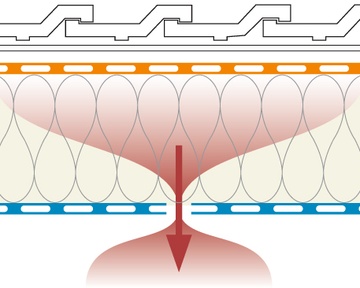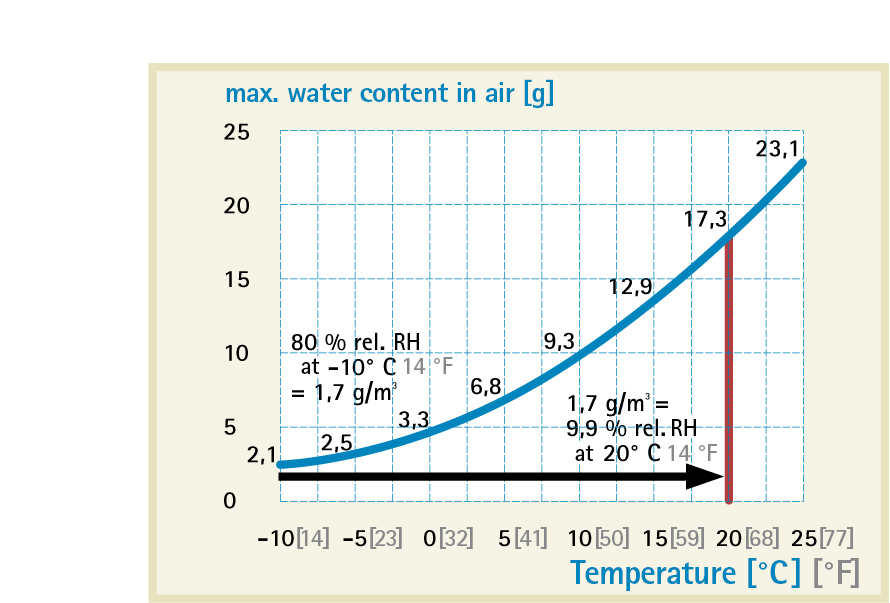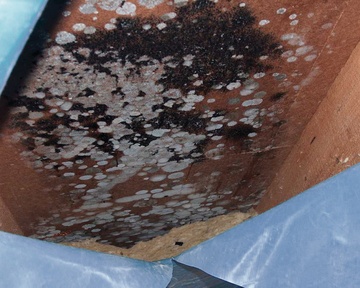Healthy Living - Indoor Air Quality
Indoor air quality and comfortable living environment
Air sealing protects against mould, helps prevent dry air in the winter and keeps living spaces cool longer in the summer.

Unpleasant room climate in summer
Thermal insulation in summertime is characterised by the time in hours that it takes for the heat present underneath the roof covering to reach the inside of the structure (phase shift), and by the associated increase in the interior temperature in comparison with the exterior temperature (amplitude damping).
Cool rooms during summer heat
The phase shift and amplitude damping are calculated for heat protection in summer. An airtight thermal insulation structure that the heat has to work its way though pore-by-pore is assumed here.
Overheating up due to air flow
Gaps in the airtightness layer result in air flow from the outside to the inside and thus also in a high exchange of air as a result of the large difference in temperature and thus also in pressure. The thermal insulation can then no longer contribute to summer heat insulation and an unpleasant room climate that is too warm is the result.
Unhealthy room climate in winter
The relative humidity in a home should be a comfortable 40-60% during the heating period. A room climate that is too dry is bad for our health.

Dry cold air penetrates through gaps
The frequently observed phenomenon of dry indoor air in winter is a result of the fact that cold outdoor air enters into buildings through gaps. If this cold air is warmed up by heating, its relative humidity reduces.
For this reason, buildings with poor airtightness tend to have air that is too dry in winter, and this cannot be significantly improved by humidification equipment. The consequence is an unpleasant room climate.
Low relative humidity has a negative effect on health and comfort
Example: Cold air at 10 °C; 50 °F can hold a maximum of 1.7 g/m³ of humidity (standard outdoor winter climate as per DIN 4108-3) at a relative humidity of 80 %. If this air is heated to 20 °C; 68 °F (standard indoor winter climate), the relative humidity falls to 9.9 %.
Mould due to condensation
Structural damage due to mould formation may occur when humid, warm indoor air enters into the thermal insulation structure in winter - e.g. through gaps in the vapour retarder and airtightness layers - and large amounts of condensation are formed. Many mould fungi release poisons - such as MVOCs (microbial volatile organic compounds) - and spores as secondary metabolic products that are harmful to human health. These are a leading cause of allergies. Humans should avoid all contact with mould fungi. It is not important here whether the MVOCs or spores enter into the human body through food, i.e. through the stomach, or through the air into the lungs.
